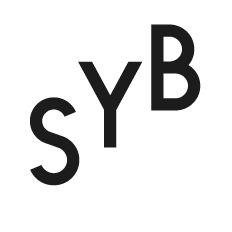21 September till 25 October 2011
THE ‘U-TURN’
Review by Suzanne Rietdijk
translation: Pieter de Bruyn Kops
“The U-turn, the turning of a vehicle in a U-shaped course so as to face in the opposite direction.”
Kunsthuis SYB is my U-turn. After a 3 hour trip from Amsterdam to Beesterzwaag, it is there where I slow down to assess my surroundings and successfully complete the turn. It forms the place where my ‘U’ has reached its apex. In a short while I try to observe and understand as much as possible, and I prefer to stay a little bit longer before I start my three hour return. But, once at home the end point is never the same as the starting point, something has changed.
For ‘Post Object Lag’ by Emily Williams I also make this journey. The presentation of the work takes place in the living room of Kunsthuis SYB. There, the group of visitors forms a homely circle wherein Williams herself has taken position. In front of her stands a small table full of objects, of which the most prominent; a blue folder holding a collection of papers with (printed) texts. One by one Williams recites these writings. When she is finished with one sheet, she gently puts it on the ground; and while the pile in her folder gets smaller, a loose collection of fragments forms on the floor, fanning out with each passing page.
The texts that she reads are personal reflections on her former project ‘The Object Lag’ in the Nieuwe Vide in Haarlem. For this project Williams was ‘artist/curator’ for one year, and organized a continuous sequence of events, happenings and performance evenings. Every part of this project was documented intensively. During her work period in Kunsthuis SYB she was able to analyze this inheritance so that the project could be processed as some sort of performative grieving period. At the same time her presentation in SYB is thoroughly documented; there is a video camera, a photo camera, and even a voice recorder, attributes that make this reflective performance into a new object of registration.
Through the presentation of her personal findings Williams has, after the curatorship, given herself a new role; one of, what I would call, an ‘artist critic’. She’s not a normal critic, because her personal stake is too high. There is not enough critical distance between her and ‘The Object Lag’. Therefore, within the role that she takes, just as with her role as curator, there is a constant shift between Williams the artist, and Williams as her concurrent new character. With the merging of disciplines all conventions seem useless, and room is created to develop a new language; and so Williams does not present her contemplations as a continuous piece of text with an introduction and a conclusion, but in a synchronized traverse of singular passages that, through their connectedness, work as an unbroken, growing thought process, where beginning and end are never clear. She reflects on her previous project, while new questions come to the surface, such as; what is the role of the curator or that of the artist? And most importantly, what is the role of documentation? Although the entire presentation can be seen as an epilogue for the project in the Nieuwe Vide, it is also a prologue for the further studies within ‘The Object Lag’. The focus does not solely lie on what has been, but also lies on what is still to come.
In the short, sporadic descriptions of the project that pass by, the listener will never totally understand what has happened. This is a very conscious choice. When the object is slightly exposed, we are instantly brought back to a complete darkness. This turning point is, according to Williams, the optimal moment. That what really matters is not the object itself, it is the moment where ‘it’ is not yet completely ‘there’, and the public doesn’t know any other way back. It is as if we are not allowed to touch it, and are certainly not allowed to let it become something physical. This is the ‘U-turn’, the conscious methodology of Williams, creating the conditions wherein ‘The Object Lag’ manifests itself, and is, almost paradoxically, merged with a thorough manner of documentation. It is a synthesis between an almost forced method to save the physical from falling into oblivion, and the conservation of the object in a metaphysical state.
During the collecting of the material presence within ‘The Object Lag’, it is the intangible that escapes traditional registration. These are the turning points that take place outside the visual and audio realms, such as the personal experience, the contemplation, that moment of doubt when we consciously wait to make a new decision, where every step can be a transition between memory and forgetting. These are the experiences, the immaterial conditions of the ‘U-turn’, that cannot be caught, that until now were absent in the generous archive of documentation material.
Therefore, ‘Post Object Lag’ forms an addition to the physical documentation recorded earlier. With her performance in Kunsthuis SYB, Williams gives us a glance in a private contemplation of her work. Although it seems like she wants to give the metaphysical a certain tangibility here, she intentionally leads the public through another U-turn where the apex does not quite touch the subject. And so, the presentation does not form a conclusion. It is a moment amongst the entire sequence of moments within ‘The Object Lag’, which, just as the performance, does not know a clear beginning or end. With a Kantian efficiency without a goal, Williams maneuvers herself and her public away from the evident, to finally come back to the start. But then it has become another starting point.
